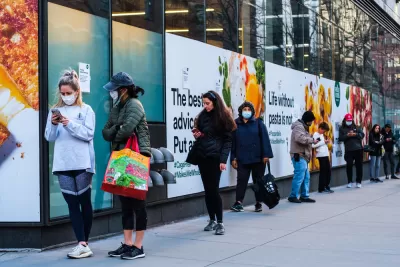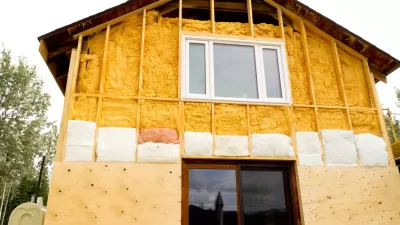New York City launched its first ever environmental justice study just before the Covid-19 pandemic turned the world upside down. The study took on a new urgency throughout the months and years that followed.

Danielle Muoio Dunn checks in with an environmental justice effort that launched in New York City just before the onset of the stay-at-home orders and shutdowns of the early pandemic.
Backing up the beginning, Mayor Bill de Blasio hired Adriana Espinoza at the beginning of 2020 to lead New York City’s first environmental justice study. A few weeks later, Covid-19 would give the study a whole new meaning, according to Dunn.
Communities of color that have long lived in the shadow of power plants, highways and waste transfer stations were among the hardest hit by the pandemic. Black and Latino residents have had significantly higher death rates than their white counterparts — often due to higher rates of preexisting respiratory conditions that trace their root, in part, to living in highly polluted areas of the city.
Dunn reports that the report will be released within months. Along the pandemic way, Espinoza says the work took on "newfound urgency to not only expose the environmental injustices that exist throughout New York, but [also to] create new standards for the government agencies she works with to undo them."
The source article also discusses examples of other jurisdictions around the country working to account for the effects of environmental injustice. The federal government has its own effort. "The Biden administration has similarly increased its focus on environmental justice communities through the Justice40 initiative — a program meant to ensure at least 40 percent of federal investments in climate and clean energy go to disadvantaged communities," writes Dunn.
FULL STORY: An ‘urgent’ crisis: City's study of environmental inequities gains new momentum amid Covid

Alabama: Trump Terminates Settlements for Black Communities Harmed By Raw Sewage
Trump deemed the landmark civil rights agreement “illegal DEI and environmental justice policy.”

Planetizen Federal Action Tracker
A weekly monitor of how Trump’s orders and actions are impacting planners and planning in America.

Why Should We Subsidize Public Transportation?
Many public transit agencies face financial stress due to rising costs, declining fare revenue, and declining subsidies. Transit advocates must provide a strong business case for increasing public transit funding.

Understanding Road Diets
An explainer from Momentum highlights the advantages of reducing vehicle lanes in favor of more bike, transit, and pedestrian infrastructure.

New California Law Regulates Warehouse Pollution
A new law tightens building and emissions regulations for large distribution warehouses to mitigate air pollution and traffic in surrounding communities.

Phoenix Announces Opening Date for Light Rail Extension
The South Central extension will connect South Phoenix to downtown and other major hubs starting on June 7.
Urban Design for Planners 1: Software Tools
This six-course series explores essential urban design concepts using open source software and equips planners with the tools they need to participate fully in the urban design process.
Planning for Universal Design
Learn the tools for implementing Universal Design in planning regulations.
Caltrans
Smith Gee Studio
Institute for Housing and Urban Development Studies (IHS)
City of Grandview
Harvard GSD Executive Education
Toledo-Lucas County Plan Commissions
Salt Lake City
NYU Wagner Graduate School of Public Service





























